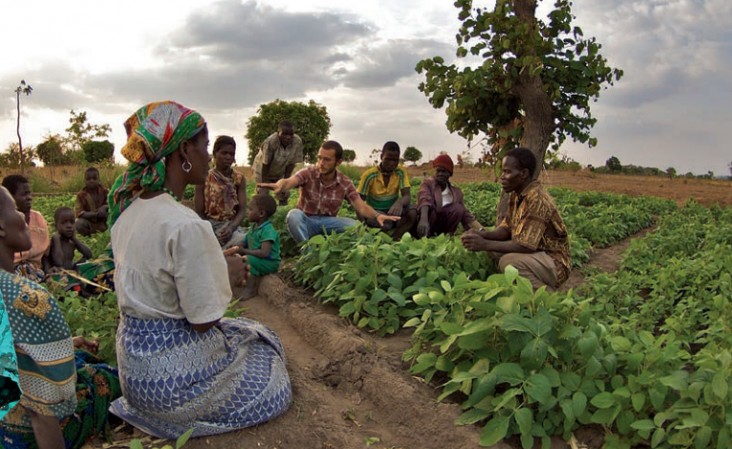Adapting Millions To Climate Change

Droughts leave the earth thirsty and infertile. Rising sea levels inundate rice paddies with unwanted saltwater. Floods submerge farms, killing crops meant to feed millions. In much of the developing world, climate change and food security are tragically intertwined. Extreme weather like heat waves, floods, droughts, forest fires, and landslides affect several hundred million people and their access to food.
In the last few years, global climate change adaptation and food security have become high priority objectives for the U.S. Government. In 2010, the U.S. Government announced two new initiatives: Feed the Future, which focuses on promoting food security among those most in need, and the U.S. Global Climate Change Initiative, which works to build resilience to climate change around the world.
Today, new attention is being given to the intersection between climate change and food security. The 2012-2016 USAID Climate Change and Development Strategy reports that agricultural production in sub-Saharan Africa will decrease by 11-28 percent by 2050 and that wheat production could disappear entirely by 2080.
USAID has been a leader in training farmers to cope with climate change by promoting climate-resilient agriculture in priority countries, such as Bangladesh, Ghana, Haiti, Kenya, Senegal, and Honduras. In Ethiopia, the Product Safety Net Program Graduation with Resilience to Achieve Sustainable Development program was launched in 2012 and will work for the next four years to train 50,000 households to meet their year-round food needs while also being able to withstand droughts and other climate-related food shocks.
Sometimes, new crops are necessary to withstand these shocks. Under the Feed the Future Initiative, USAID introduced high-yield, drought-resistant crops to farmers throughout the world. In Senegal, regular rice varieties were failing because of annual rainfall variation and drought, so USAID introduced a high-yield and protein-rich drought resilient rice variety, called New Rice for Africa or “Nerica,” to almost 4,000 farmers. Now, Senegalese farmers can not only feed their own families, but also have leftovers to sell in the market.
Rising sea levels threaten food production. In Bangladesh, over 20 million people in low-lying lands are at risk from floods and rising sea levels. When this happens, crops sustain saltwater damage, threatening the food security and livelihoods of Bangladeshis. USAID supports research to develop a salt-tolerant rice variety in order to increase yields of rice. It has also developed new farming practices that decrease greenhouse gas emissions in Bangladesh. One of these methods is the Deep Urea Placement technique, which is a nitrogen fertilizer application method that deposits the fertilizer deep beneath the soil. Roots immediately pick up the nitrogen, decreasing the emissions that exacerbate climate change.
Climate change leads to warmer ocean waters, which leads to coral reef damage and mass fish kills, which jeopardize food security for the one-third of the planet’s population that relies on fish for at least 20 percent of their animal protein. In the Seychelles for instance, coral reefs are a key source of food and livelihoods, but climate change has led to coral bleaching. After El Nino in 1998, temperatures in the Indian Ocean temporarily rose about 5 degrees Fahrenheit, and up to 90 percent of the coral reefs in the Seychelles died. USAID is restoring damaged coral reefs by growing and planting different species of coral in the most degraded areas, ensuring that they are protected from predators while they are growing. Along with the reefs, the food security and livelihoods of thousands in this oceanic African state will be revived.
With multiple issues threatening global food security, it is becoming more and more necessary to anticipate and combat climate change impacts early. USAID has begun implementing early-warning programs, which use technology to anticipate and alert stakeholders to climate shocks that affect food. One of these programs is the Famine Early Warning Systems Network (FEWS NET). FEWS NET uses information from international, regional, and national partners, and employs geo-spatial data, satellite image products, and derived data products in order to monitor emerging and evolving food security issues in 25 countries. When potential threats to food security are identified, decision makers can use the FEWS NET technology, such as food security updates, alerts, and briefings, to act to alleviate the threats.
As oceans rise and floods and droughts threaten crops and water resources, resiliency measures like these are increasingly necessary. With continued vigilance, millions will be able to attain food security in the face of a changing planet.
C. Wixted







Comment
Make a general inquiry or suggest an improvement.